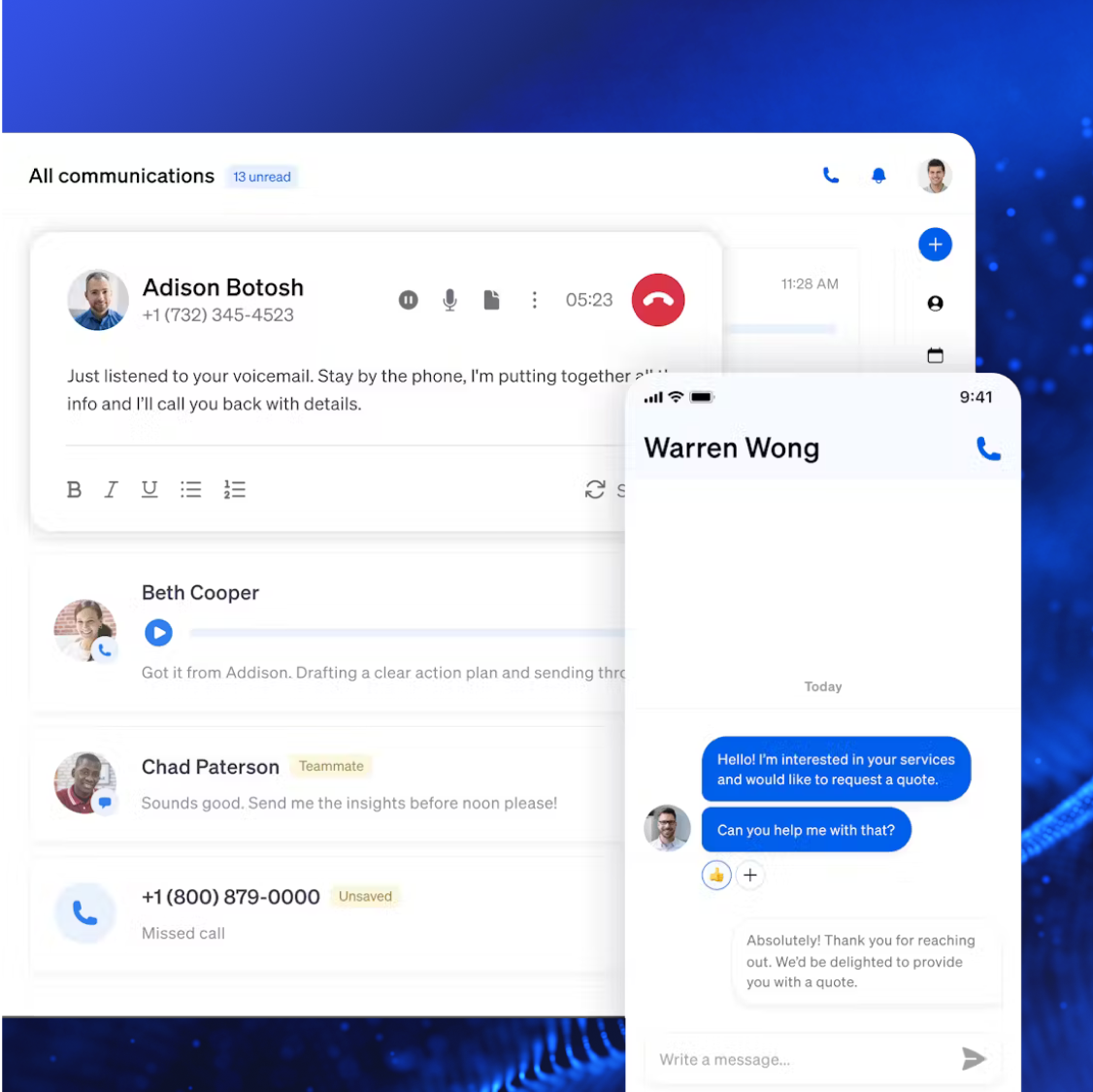Automation is key to driving productivity and revenue growth in a competitive business world. It frees employees from mundane, repetitive tasks, so they can focus on more strategic and value-added activities.
Intelligent automation isn’t just a trend; it’s a strategic investment. Studies show significant cost savings (with some exceeding $100 million!), but the benefits go beyond the bottom line.
Automation has come a long way from basic scripts and timers. Remember those clunky chatbots or frustrating automated phone menus? Those were early examples of automation.
Today, we’re talking about intelligent automation, powered by technologies like artificial intelligence (AI) and machine learning (ML). This new generation of automation can handle complex tasks, analyze data, and even make intelligent decisions.
Before diving headfirst into automation, let’s talk about getting started on the right foot. Here’s a step-by-step guide to ensure a smooth and successful automation journey for your business:
How To Automate Tasks: 5 Key Strategies
1. Analyze your processes
The first step is to take a good look at how things are currently done in your organization. Let’s call it a deep dive into your workflows.
We’re looking to pinpoint areas that are ripe for automation. Are there tasks that are repetitive, rule-based, and well-defined? These are prime candidates to be automated.
For instance, data entry, form filling, or email sends can all be automated, freeing up your employees’ time for more strategic work.

But it’s not just about automating everything. Some tasks are best left for human intervention. Determine which tasks are better suited for a machine and which require your employees’ creativity and problem-solving skills.
Now, communication is key here.
To make automation successful, you need clear communication and collaboration between different departments in your organization. Imagine your Chief Information Officer (CIO), the tech whiz, working hand-in-hand with your Chief Operating Officer (COO), the business expert.
When these two leaders work together, the IT team can focus on the technical aspects of automation, like security and integrating new technology with your existing systems.
At the same time, the operations team can manage the implementation of the new automation tools and ensure your employees are comfortable using them.
2. Identify the right tools for the job
Once you’ve identified automation tasks, select the right technology. Consider Robotic Process Automation (RPA) and Intelligent Process Automation (IPA).
Think of RPA as your digital workforce. It excels at handling simple, rule-based tasks, like data entry, form filling, or sending automated emails. It can mimic human actions across applications with high accuracy and speed.
But what about more complex tasks? That’s where Intelligent Process Automation comes in.
IPA builds upon RPA by integrating AI and Machine Learning capabilities. These tools can handle complex decision-making based on unstructured data like emails, documents, or images.
For instance, IPA can extract meaning from emails, analyze situations, choose the most appropriate course of action, and continuously learn and improve over time.

Related: 7 Types of Digital Transformation Tools for Modern Workplaces
3. Select the right automation platform
Choosing the right software platform is critical for a successful digital transformation. You can choose from a variety of automation platforms, each with its strengths.
Here’s a quick rundown to help you choose the perfect fit for your needs:
- Streamline document management and information flow with Robotic Process Automation (RPA), Content Service Platforms (CSP), and Intelligent Document Processing (IDP) Platforms.
- Facilitate process discovery, modeling, and data analysis with Business Process Automation (BPA) Platforms, Integration Platform as a Service (iPaaS), Low-code Application Platforms (LCAP), and Process/Task Mining Platforms.
- Address decision automation with Decision Management Suites and Business Process Automation (BPA) Methods.
Remember, there’s no one-size-fits-all solution.
Consulting giant Accenture recommends a modular approach to automation implementation. This allows businesses to adapt quickly to changing needs and embrace innovation as it emerges.

4. Track costs and measure ROI
You’re investing in a fancy new machine, but you have no idea if it’s actually saving you money or making things easier. That’s why tracking costs and measuring ROI (return on investment) is crucial for automation.
A common mistake companies make is underestimating the total cost of automation. This can lead to misleading ROI calculations and derail your entire automation plan.
Just like tracking your household budget, you need to track all the costs associated with automation. This includes software licenses, the cost of implementing the new system, and even employee training.
But that’s not all.
Measure the benefits of automation too. Are your employees more productive? Are you saving money on manual tasks? Is customer satisfaction improving?

Depending on whether you’re automating a single process or undergoing a broader business transformation, you might need to use different methods to calculate your ROI. The key thing is to have accurate data on both costs and benefits.
Without good data, it’s like driving blindfolded. Leadership might make the wrong call and decide to ditch automation altogether, which could hold your business back from reaching its full potential.
5. Invest in employee training
Automation isn’t just about buying new technology, it’s about transforming your entire business model. To make automation successful in the long run, invest in employee training.
Here’s why:
- Skilled up and ready to go: Comprehensive training equips your employees with the skills they need to effectively use automation tools. This empowers them to tackle current challenges and even anticipate and solve future problems that might arise.
- Embrace the journey: Change can be scary, and automation is definitely a change. Training can help your employees develop a growth mindset, encouraging them to embrace continuous learning and adaptation in this new age of automation.
Leadership also plays a critical role in this process. By getting trained on automation tools themselves, leaders can better understand their capabilities and effectively encourage their teams to use them.

As automation evolves, the types of jobs your employees do and the skills they need will change. Leadership training equips managers to understand these changes and develop effective talent management strategies to keep the workforce future-proof.
Leadership training can help foster a culture of innovation where employees feel empowered to identify new automation opportunities and contribute to continuously improving the business processes.
The Future of Business Is Automated
Automation presents a powerful opportunity to boost your business efficiency, productivity, and business performance.
Carefully selecting tasks for automation, fostering collaboration across departments, choosing the right tools, and investing in employee training, businesses can easily automate tasks and gain a competitive advantage.
As automation continues to evolve, businesses that embrace this technology will be well-positioned to thrive in the years to come. The future of business is automated, and those prepared to adapt will reap the rewards.

Automate the busywork.
Spend more time with customers and less time tackling tasks with Nextiva.















 Productivity
Productivity 







